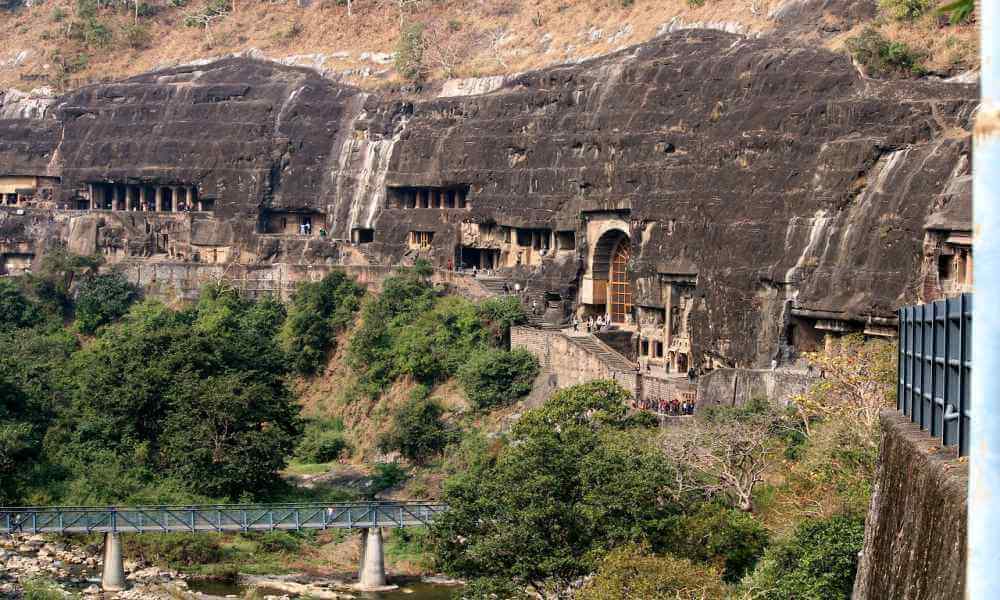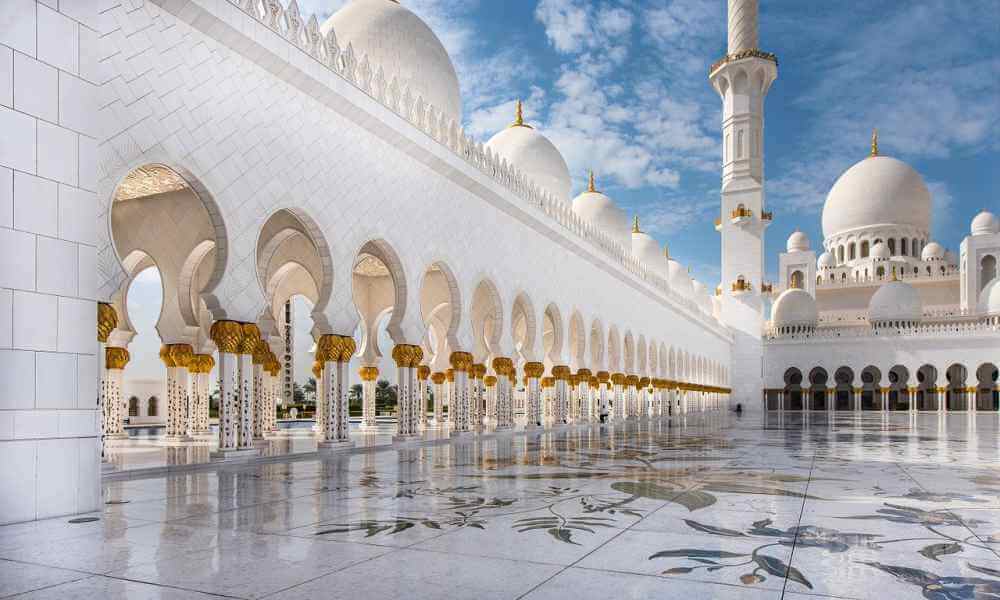Major Religions in India
Sikhism
The Literal meaning of Gurudwara is a door of teacher. If we take an example to visit any Sikh temple, it is mandatory for all the people as a pilgrim to cover head, and no one is allowed to consume tobacco/ alcohol in the temple premises and the whole body should be covered by the cloths covering up to knee and one has to leave the shoes with socks at the space given to drop and further you may join prayer hall. Visit silently takes proper photography/ photos to the areas permitted for all pilgrims and further continue towards an exit.
You may visit certain another area in a Sikh temple that is gender basis for example water pool, which is created to take a holy dip before you are going to the Sikh temple. Further, residential areas which are normally offered free of cost to any caste/ religion person to stay overnight and kitchen, as well which is popular known as Langar ( common community hall) area, where it is possible to have meals/ tea which is served as Prasad or Sikh temple and pilgrims may pick and drop required utensils from a given space and before they are leaving/ dropping utensils they must have to clean utensils themselves with the proper water and washing soap provided by temple management.
Temple management never asked to pay any entry fee or photography charges as well as stay and food cost, it is an individual choice if they feel comfortable they may drop some money in the donation box which is available in temple premises as well as they may get receipt of the same. There is a special Prasad in the temple which is called halwa (prepared by wheat flour, sugar and oil). It is hygienic for the stomach ( if any doubt created by the international passenger or tourists).
Hinduism
Hindu temples wither at sun rise or at sun set so tourists can see the actual ceremony of hindu temple performed by the temple priest which may be lightening of the temple area, oil lamp ceremony with varieties of 56 bhog with special dress worn by the temple priest ( Pujari) i.e. Kurta and Dhoti and different types of fore head decorated with special teekas and performance of arti can be witnessed within a limited time further followed by visit of various other galleries open to visit and see either various gods goddesses with framed photographs/ prayer halls, and it may be possible to meditate for some time and understand the importance of OM and Yoga/ meditation for healthy body and mind.

During the visit of temple guide may cover various Hindu philosophies that may be char ashram vyavstha (four stages of life) which is brahmacharya, grahsthya, vanprastha and sanyas followed by Niravana. All doctrines of these four stages may be briefed how India accepted these stages of life and further guide may explain the importance of purushtartha- Dharma, artha, kam, mokchha and to get nirvana. A small lecture by the guide can be delivered on another aspect of Hindu philosophy how Ganga/ Geeta/ Gaya (Cow) are very holy for every Hindu giving/ mentioning the religious sites of India that may be Hardwar, Allahabad, Varanasi, where one can see live performance of Hindu family rituals which is between birth to death.
Jainism
Jain Temples, if we talk any important Jain temple where temples are open between sunrise to sunset and the religious Jain is divided into two branches Digambar and Shwetambar. Guide may explain the history and background of this religion when it was commenced and till not what are the principles of present followers which any of the tourists can witness during the visit of certain temples for example in this religions people do not pluck and offer any flower to the deity/ oil lamps which are offered to the deity normally covered all the side with the glasses and top by thick iron net so no insect can reach to the flames of Deepak/ in these temple ceremonies followers normally offering almond, clove, yellow rice ( normal rice with turmeric or sandal powder) and white coconut to the deity even now in India some of the Digamber branch followers do not wear any cloth at all during all seasons of the year that is winter, monsoon, summer and spring.
Followers they believed the ‘sky’ and ‘weathers’ are their natural clothing and all Jain religion followers never eat anything which grows under the soil that is any kind of root (for example ginger, carrot, radish, potatoes, onion, garlic etc.). Their timings for meals are also very strict from sunrise to sunset. The Jain monks never cut their hairs, they always ask their followers to go plucking of hires which are as bearded or top of the head. They never wear any shoes or slipper as they believe hard sole of the shoes or slipper may kill insects. They never travel by vehicle. They never accept any money, jewelery from devotees and they sleep on floor never on any bed or furniture and before they do sweeping by the bunch of peacock feathers to protect small insects. Jain monks in their whole life they travel by walk (never use any private vehicle/ public transport).
They follow the principle of celibacy ( Brihmacharya). As mentioned previous the first branch digambar and their present followers never wear any cloths but, in the second branch which is Swetamber followers can be male/ female and they wear their whole body by white sheet of clothes (not cut and stitched). Swatamber monks bear white cloth mouth to restrict any insect to enter inside the mouth. And both genders they also follow principles of celibacy and remain in Jain Temples only and do all the routine temple ceremonies. If we study population of Jain religions in India, is low in numbers but, in the past their position was in the cast system under the vaishya varna they were responsible for all trade and commerce activity for the society majorly they were into the business of jewelry and textile. Jain religion is based on the principle of Ahimsha.
Christianity
A trained guide is responsible to study before taking on tour to any church, because in India we have a population of Christians religions majorly they are found in in Goa, Pondicherry, and they are scattered in all over India and they do the prayer of saint Jesus Christ as their principle god and they normally follow all the principles of Christianity during the visit of any church it is observed that there is no such any restriction of any dress code/ shoe slipper and camera/ video filming which gives very high comfort to the domestic and international tourists before entering into a church.

It is always mandatory to maintain silence and listen the lectures normally delivered in English by the concern father of the church. Special prayers of week days are on Sunday. Whole world celebrate 25th December is an auspicious day of Christians religions that is charismas days all over the world followers they reach to the church with new dress and carry cake/ pastry for celebration of mid night festival share among the family friends. Main festivals of Christians are Easter, Good Friday and Charismas.
Parsi
Parsis migrated from Iran to Sindh and Gujarat during 8 to 10th century. During the Arab conquest, major religion was Zoroastrians. During this time many Iranian migrated to India. These are known as Parsi. Parsi religion people pray fire. There is a temple in Gujarat known as Parsi fire temple. They have made a remarkable contribution in the history and development of India.
Islam
As India is democratic country and all Indian respect each other’s religion among us are many Islam religion followers. We have two famous Islamic mosques one is in New Delhi i.e. Jama Masjid and another in Bhopal i.e. Taj Ul Masjid and in all major and small cities/ towns one can find a mosque ( Masjid) which is the most purest place for performance of namaz. It is mentioned in Quran Sharif (the holiest book Islam religion that one has to perform five times namaz in a day and it is also normally observed that male and female of Muslim families are very strict to perform five times namaz on Friday, if possible they try to reach nearby mosque.

In Islam Ramazan is the holiest month (pak month) for every Muslim to go on day fasting for whole month in which they are not eating of drinking any food or liquid only after sunset they are eating special food of the holy month. Which is prepared by the family members and all family members assemble in one big hall of the house and they pick the food items from one big thali which is jointly offered. This pak month followed by the Eid. On this top most festival of islam religion all of them they go namaz with new clothing special sweet dishes are prepared and shared among the society of friends. Every Muslim has a wish to attend at least once in a life time visit to Mecca and Madeena the holiest religious site in Islam.
Buddhism
Buddhism means cosmic law and order. It is applied to the teachings of lord Buddha. Buddhism among many religious Buddhism is another imprint religious of India and it is considered nearly 2500 years old religion. It is said that Lord Buddha bored during the 5th century BC. The Guide may explain during visit of any Buddhist religious site principle of Buddhism and previous life of Lord Buddha which is known as bodhi satva and small description note of chaitya/ viharas and about the community of Buddhist monks. In Buddhism there is concept of triple gem i.e. Sangh, Dharma, Buddha.
There are four noble truths: 1. Origin of suffering is craving 2. There is suffering. 3. There is also end to the suffering and last one is 4. The way to the end of suffering is eightfold path. There are seven factors of enlightenments in Buddhism i.e. Mindfulness (sati), Investigation of the dharma (dhammavicaya), Tranquility (passaddhi), Concentration (samadhi), Equanimity (upekkha), Rapture (piti), Energy (viriya).





